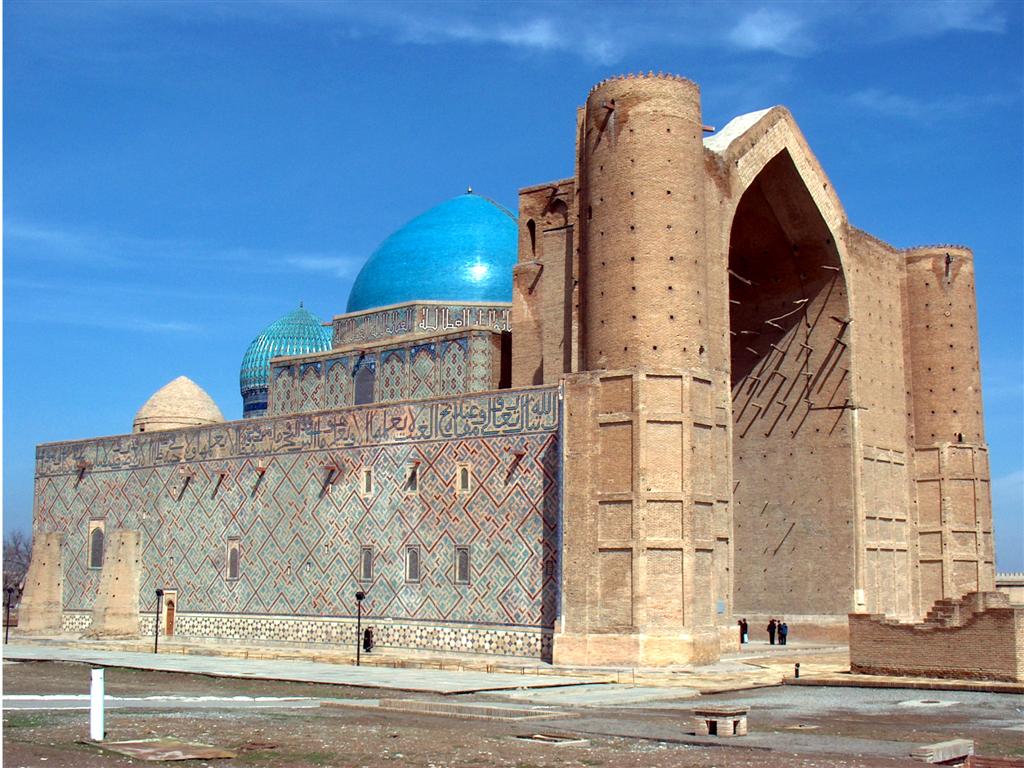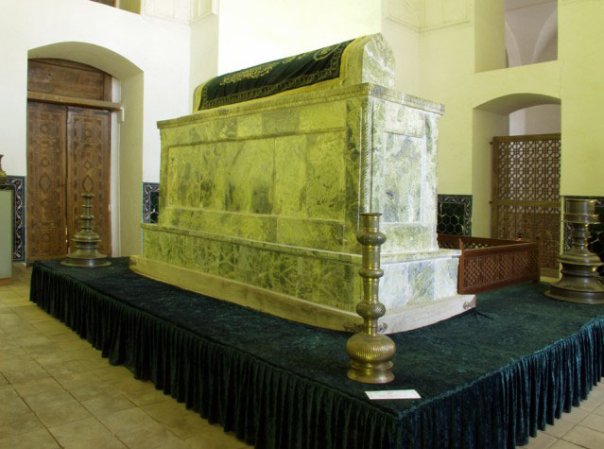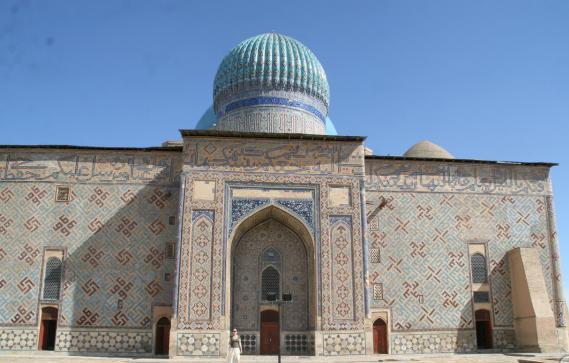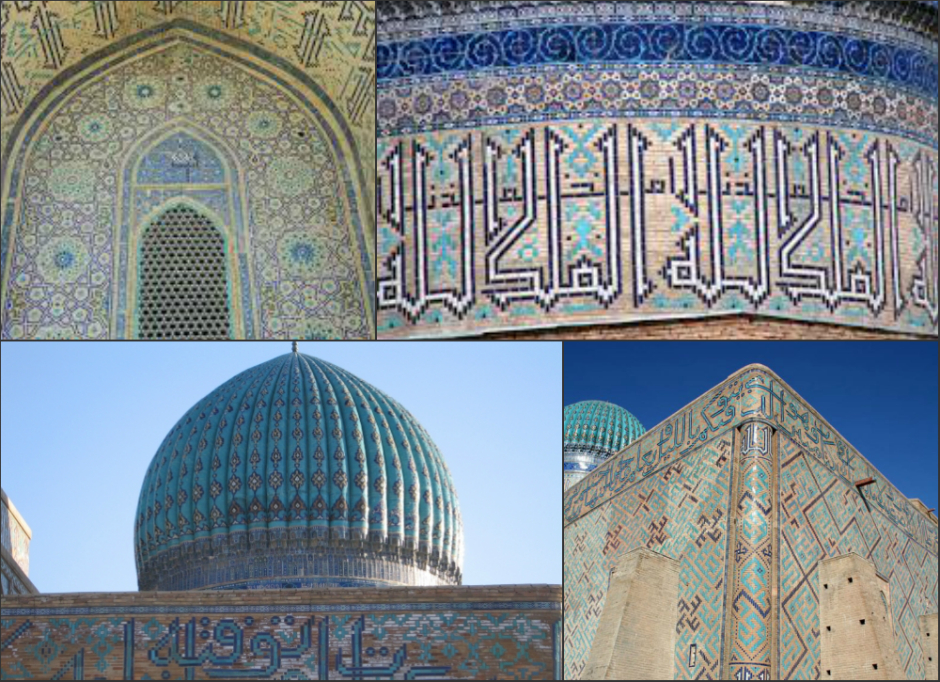
The Mausoleum was built by the order of Amir Timur. Amir Timur is a great military leader who conquered 27 countries and established his own empire. Some scientists believe that he was born on the territory between the Amu Darya and Syr Darya.

Amir Timur
The construction of the Mausoleum started in the 1390-s and lasted until Timur’s death (1405).
We remind that Khoja Ahmed Yasawi is a prominent Sufi preacher whose poems were well known in the Turkic world. In his poems he called for peace and asceticism, condemned lie, hypocrisy and gain of oppressions. According to historical chronicles, Khoja Ahmed drew out the flavour of Khan Arslan, one of the greatest Turkic preachers of Islam and ruler of Maverannahr. Arslan was a person who raised him.

Khoja Ahmed Yasawi
Why did Amir Timur decide to build the Mausoleum?
According to the Amir Timur’s Code, he believed that it was possible to establish a fair state and expand his power on the basis of Islam. This is what he wrote in his Code: "My life experience has proved that a rule without religious and legal basis cannot exist long. It is like a naked man who makes other people cast down their eyes and do not command any respect. We can also compare it with a house without roof, doors and fence to which the most despicable person may come in." This means that he paid much attention to religion in his state which explained the construction of the Mausoleum.
It’s known that in the 14th century Amir Timur fought against Tokhtamysh for the cities located in the basin of the Syr Darya. In 1388 the Khan of the Golden Horde Tokhtamysh robbed the grave of Khoja Ahmed Yasawi. Later Amir Timur defeated the army of Tokhtamysh and took away the loot. He decided to use the money to construct a new enormous mausoleum under the grave of the preacher.
Amir Timur was a religious person. It’s known that in decisive battles he read poems of Khoja Ahmed Yasawi and claimed that the poems helped him to win.
What does the Mausoleum look like?
The building consists of a mosque, madrasah, library, two palace halls, burial-vault, residential rooms, dining room, central hall called kazandyk and well room. The main (the South) entrance is decorated with a majestic arch and two towers — minarets.

The main entrance leads to the central hall — kazandyk. It’s a square room, and the length of each wall is 18.5 m. There is a taikazan (big cauldron) in the centre. The room has a dome that is the biggest in Central Asia. Two small residential rooms are adjacent to kazandyk from eastern and western sides. A carved door separates the central hall from the burial-vault.

The burial-vault is a square room, and the length of each wall is 7.5 m. The 1.85 m high gravestone of Khoja Ahmed Yasawi is placed in the centre of the room. The graves of wife and son of Yasawi’s son Ibrakhim-Shah are situated in the same room. The room is topped with double dome.

The northern part of the Mausoleum is also decorated with an arch. The mosque is situated in the north-western part. The mosque allows access to the library and kazandyk. Between the mosque and the burial-vault there are rooms that allow visiting Yasawi’s grave (ziyarat-khana). Barred door is the only thing that separates these rooms from the grave.
The small and large palaces are located in the north-eastern part of the mausoleum. The small palace was used to bury the most respectful people for 600 years. The large palace served as a meeting room, Khan’s throne and sceptre are situated there.
The south-western part is the dining room where servants cooked a special dish called khalim (porridge) to give to poor people. There is a room with a well called kuduk-khana in the south-eastern part.
The facade of the building is decorated with geometric and floral ornament. You can also see writings both outside and inside the building.
What do the writings mean?
The writings on the facade are texts of the 59, 60, 61, 62 and 63 suras of the Koran. There are five eight-pointed patterns looking like stars on the left and on the right from the arc on the front side of the northern portal. The pattern is the Prophet’s name repeated twice.
A 96.7 m high banner which weights five kg has been kept in the mausoleum. There is writing about Amir Timur on it: "The most glorious sultan, ruler, wise man, Amir Timur."

The Mausoleum of Khoja Ahmed Yasawi demonstrates that Amir Timur took care of poor people and tried to solve their problems. Undoubtedly, they could find a shelter in this building.
Dilyara Seidakhmetova
